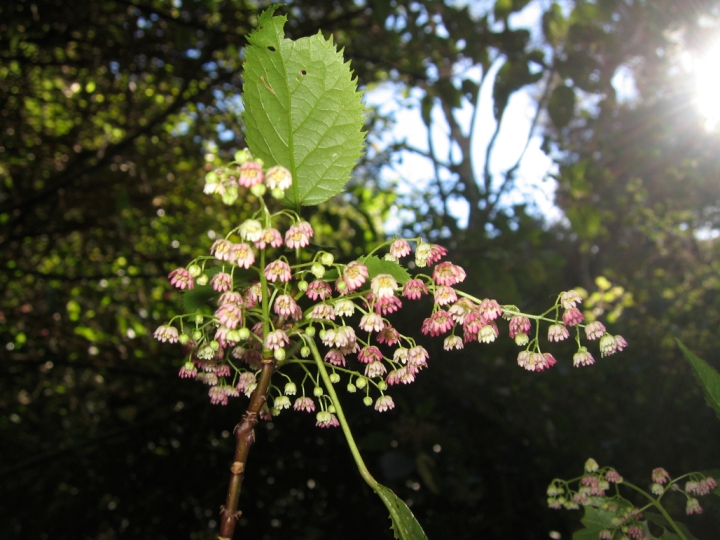The history of brewing alcohol in New Zealand is relatively short.
Māori were one of the few indigenous groups in the world that had no history of alcohol use – a title they share with they inuit of Canada and several Native american tribes. They got by fine by drinking plain water, occasionally garnished with fern fronds, or sweetened with flax nectar or sugar from cabbage tree roots.
It was a different story when Europeans arrived. Captain Cook laid down the first homebrew beer in 1769 by using rimu and mānuka branches and ever since, missionaries, sealers and whalers began searching out new ways to extract grog from native plants. When Māori first tasted European alcohol, many found it repulsive – and it became known as waipiro – the stinking water. However, as alcohol use became more popular and widespread in New Zealand – it sparked a surge of interest in creating cheap native alternatives and some Māori began developing their own homebrew recipes.
The following plants are some of the most popular native brews from throughout New Zealand history.
Spruce Beer

The first true beer made in New Zealand was laid down by Captain Cook using branches of rimu and mānuka, in an attempt to ward off scurvy in his crew. The resulting brew was said to taste refreshing and healthy, and bubbled like champagne. Cook himself wrote that the brew was “exceedingly palatable and esteemed by every one on board.” Other European explorers replicated Cook’s original recipe and more recently, craft breweries have attempted to recreate it (1, 2, 3). You can even attempt it yourself, the original recipe is recorded here or you can use the plain English version below:
Captain Cook’s Beer Recipe

- Boil small branches of rimu and mānuka in a large drum for three to four hours or until the bark can be stripped easily.
- Take the branches out and add as much molasses as required, 10 litres of molasses will make around 60 litres of beer.
- Pour the mixture into separate casks and add an equal quantity of cold water, according to your taste.
- When the mixture is luke-warm, add anything that will cause fermentation such as yeast or beer grounds.
- In a few days the beer will be fit to drink.
Tutu Wine

In former times, the juice of tutu berries – wai tutu – was a popular drink for Māori. It was consumed in large quantities and could be boiled with seaweed to make jelly. When fermented this juice had a laxative effect and was used to help relieve the constipating effects of eating too many Tōtara, Rimu or Karaka berries. Early European missionaries quickly set about turning this fermented juice into wine. The resulting brew is said to taste like elderberry wine, and to resemble a light claret in colour. It is also reported to pack quite a strong alcoholic punch. However, extreme caution was required as the seeds inside the fruit contain a deadly neurotoxin tutin which has claimed many lives. People have died from trying to make tutu wine and tutu pies that accidentally included the seeds.
Cabbage Tree Rum

Cabbage tree roots are high in fructose, which made them useful in brewing alcohol. Missionaires would brew it into beer, and whalers in the south island used it to make moonshine, rum and whiskey and sold it illicitly. The most famous distiller was Owen McShane, who lost his job making oil barrels for whalers and turned instead to making illegal cabbage tree rum. There seems to be a wide consensus that the taste of this rum was pretty awful – but that didn’t stop it being popular. At Bluff Hotel, a large barrel of the brew was placed on the table, and patrons were allowed as many cupfuls as they could drink. More recently, two PhD theses (1, 2) have focused on the possibility of developing a tequila-like alcohol from the roots of cabbage tree and selling it commercially.
Mataī Beer

The trunk of mataī trees can be tapped and the sap drained to produce a refreshing drink known as mataī beer, however it quickly becomes flat when exposed to air. While this sap is not a true beer – there are reports that it was made into beer by adding beer grounds or yeast and leaving it to ferment. Reports on the taste are somewhat mixed – some say it is a refreshing drop, sweet with a bitter aftertaste. Others are much less generous, with one author describing the taste like “…used machine oil….when a deep swig is absorbed one has all the sensations of having swallowed a lighted kerosene stove.”
Supplejack Sarsparilla

The roots of supplejack were used by European settlers, bushmen and gum diggers as a substitute for sarsparilla which has a similar scent and flavour. While not alcoholic, this “root beer” was said to be a healing tonic, used to purify the blood and to soothe bowel problems, aches, fever and itchy skin. One physician recommended it mixed with wine for patients with heavy menstrual flow and some people drunk it in order to cause an abortion. The roots can also be used in brewing traditional alcoholic beer, and the result is described as gold and heady, and soothing to the throat.
Tītoki Liqueur

Despite their appetizing look, the fruit of tītoki taste rather dry and uninteresting – however, they do provide one of the most commercially successful native liquors. Ti-toki liqueur was originally made from tītoki berries, kawakawa leaves and mānuka leaves. To scale up the production, the company developed artificial flavours that mimic the taste of these plants. The resulting drink is said to taste rather warm, with a smooth, sweet after-taste that reveals different sensations with further tastings.
Mairehau Mulled Wine

Mairehau is an aromatic shrub in the citrus family. Maori used the fragrant leaves to scent oils, and rubbed it on the body as perfume. More recently, university botanists have been known to use it as flavouring when brewing mulled wine out in the field – the result is said to be most delicious. Care should be taken however, as some people experience photodermatitis from the oil in the leaves – a burning sensation on the skin after being exposed to sunlight.
Other Native Homebrews

European settlers used kūmarahou leaves as a substitute for hops to make a refreshing, tonic beer, and stewed the berries of makomako or wineberry into wines and jellies. Missionaries were known to brew the leaves of kawakawa into an aromatic, thirst-quenching beer. After the introduction of European alcohol, Māori began developing their own homebrews, known as Paikaka. These tended to use the bitter leaves of kūmarahou, the bark and leaves of kohekohe, or twigs of rimu. The overripe flowers of the kiekie vine can ferment and become alcoholic, and there is some evidence that Māori may have cultivated kiekie in Taranaki and brewed it into a fermented liquor.
Related posts:
Further Reading:
Maori & Alcohol: A History
Maori Healing and Herbal
Pleasures of the Flesh. Sex and Drugs in Colonial New Zealand 1840-1915
The Story of Beer. Beer and Brewing – a New Zealand History
Native Edible Plants of New Zealand










Great post 😁
LikeLike